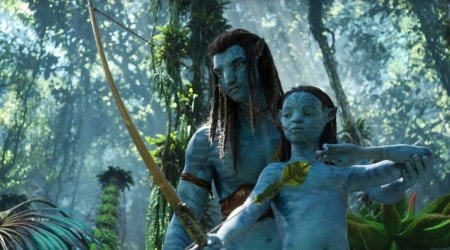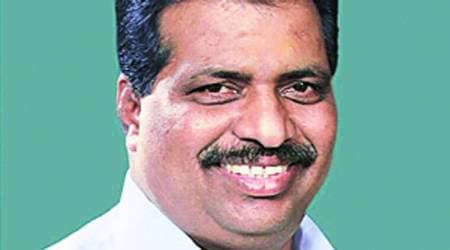Four Indian cars were tested in the latest round of crash tests conducted by Global NCAP, a UK-based road safety NGO, with the three featured cars from India’s largest carmaker Maruti Suzuki faring poorly. The results have triggered a fresh debate on safety of cars sold by global manufacturers in India and also the sanctity of these independent tests carried out by Global NCAP.
Crash test norms
NCAP stands for New Car Assessment Programme, a series of safety tests instituted by Global NCAP, a British organisation that counts Bloomberg Philanthropies, FIA Foundation (the governing body for Formula 1 racing), International Consumer Testing and Research, and the Road Safety Fund among its promoters, and has editions in several car markets to assesses safety and build quality parameters in new vehicles. The higher the NCAP score, the safer the car is supposed to be.
The only non-Maruti Suzuki car in the list of the latest vehicles — the Mahindra Scorpio-N — scored five stars for adult occupant protection and three stars for child occupant protection.
The popular mid-range hatchback Suzuki Swift got one star each for adult and child occupant protection, while Suzuki’s entry level S-Presso and premium hatchback Ignis both scored only one star for adult occupant protection and zero stars for child occupant protection. The three Maruti Suzuki models were tested in their basic safety specification with two frontal airbags and ABS (Anti-Lock Braking System), with none of the three models providing ESC (electronic stability control) or side curtain airbags as standard or as optional equipment.
All three models, Global NCAP said, “demonstrated unstable structures during frontal crash testing”.

Global NCAP’s updated protocols assess frontal and side impact protection for all tested models, while ESC, pedestrian protection and side impact pole protection assessments are also required for vehicles scoring the highest star ratings.
Sanctity of Global NCAP tests
While the Global NCAP tests are useful when customers make a choice about the vehicle they plan to buy, these are third-party tests that are seen as being additional to safety standards prescribed by the government. The UNECE World Forum for Harmonization of Vehicle Regulations (WP.29) is, by default, the worldwide regulatory forum within the institutional framework of the UNECE Inland Transport Committee, which are part of three UN Agreements, adopted in 1958, 1997 and 1998, and provide the legal framework allowing Contracting Parties (member countries such as India) attending the WP.29 sessions to establish regulatory instruments concerning motor vehicles and motor vehicle equipment. These regulations are – the UN Regulations, annexed to the 1958 Agreement; the United Nations Global Technical Regulations (UN GTRs), associated with the 1998 Agreement; and the UN Rules, annexed to the 1997 Agreement.
India had signed the UN WP.29 1998 Agreement in February 2006 and continues to actively participate in the GTR formulation by furnishing data and subject matter expertise, and currently has more than 70% safety regulations that are either partially or fully technically aligned with GTRs and UN Regulations while retaining Indian specific driving and environmental conditions. These regulations are reviewed periodically and amendments are recommended to the Technical Standing Committee on Central Motor Vehicles Rules for adoption and subsequent notification by the Ministry of Road Transport and Highways under these Rules. They form the backbone of the compliance architecture for passenger vehicles in India.
So, technically, all the cars that currently ply on Indian roads meet these government’s safety norms that were last upgraded in 2019. Cars such as the Maruti Suzuki Omni or the Tata Sumo that failed to meet these norms had to be phased out as soon as the new government norms kicked in. The Global NCAP ratings are over and above the government norms, purely to help customers make an informed choice of the models they choose and to push manufacturers into improving safety standards. But the Global NCAP norms are not mandatory, so cars that come in for testing are either sponsored by the manufacturer or picked by the agency randomly from showrooms. And they typically pick car models that have a sketchy safety record.
Carmakers such as Maruti Suzuki have previously reacted to these Global NCAP tests by stating that they are conducted at speeds that are higher than those prescribed by the regulatory authorities not only in India but in Europe and the US, and that they are in compliance with the rules and regulations. To that extent, they are right.
But there are some issues that could raise questions: for instance, the Suzuki Ignis with two airbags available in the African market that was tested by Global NCAP in 2019 recorded three stars for adult occupant protection and one star for child occupant protection, while the 2016 Euro NCAP tests of the Ignis sold in the UK market recorded a three star overall rating with the standard safety equipment and five stars with a safety pack. So there seems to be differing yardsticks adopted by the manufacturer for different markets.
But there is also an India-specific reason cited by carmakers manufacturing entry-level vehicles: that the customers that typically buy entry level cars in India are graduating from a two-wheeler and that the move from two wheelers to four wheelers itself entails a certain safety upgradation, and that the price of these cars cannot be jacked up substantially as that would delay the transition from two-wheelers to four wheelers. Carmakers such as Maruti Suzuki have cited this as a reason for opposing the Ministry of Road Transport and Highways’ push to implement six airbags in all cars.
New Bharat NCAP norms
On the specific issue of standardisation of crash tests and on the sanctity of Global NCAP, the government has been trying to make some headway, even though it is much delayed. The Union Ministry of Road Transport & Highways has recently approved a draft notification to introduce Bharat NCAP (New Car Assessment Program). The programme will be rolled out from April 1, 2023. Passenger vehicles with up to eight seats weighing under 3.5 tonnes will be tested under this. Automobiles in India will be accorded star ratings based on their performance in crash tests factoring in the existing Indian regulations and driving conditions. The Bharat NCAP program was first announced back in 2016.
In a series of tweets earlier this year, MoRTH Minister Nitin Gadkari said Bharat NCAP would serve as a consumer-centric platform that allows customers to opt for safer cars based on their star ratings, while promoting healthy competition among Indian manufacturers. “Star rating of Indian cars based on crash tests is extremely crucial not just for the safety of passengers, but also to increase the export-worthiness of Indian automobiles,” he said.
Emphasising that the testing protocol of Bharat NCAP shall be aligned with global crash test protocols factoring in the existing Indian regulations, Gadkari said it will allow Indian manufacturers to get their vehicles tested at our own in-house testing facilities.
Also, Bharat NCAP will not just be limited to passive safety tests and testing internal combustion engined vehicles, but also rate CNG cars and electric vehicles based on their crash test performance. Also, unlike formats followed by GNCAP, which award separate star ratings for adult and child protection, BNCAP is likely to get a single combined rating. Once these norms kicks in, manufacturers would be left with little wriggle room.









